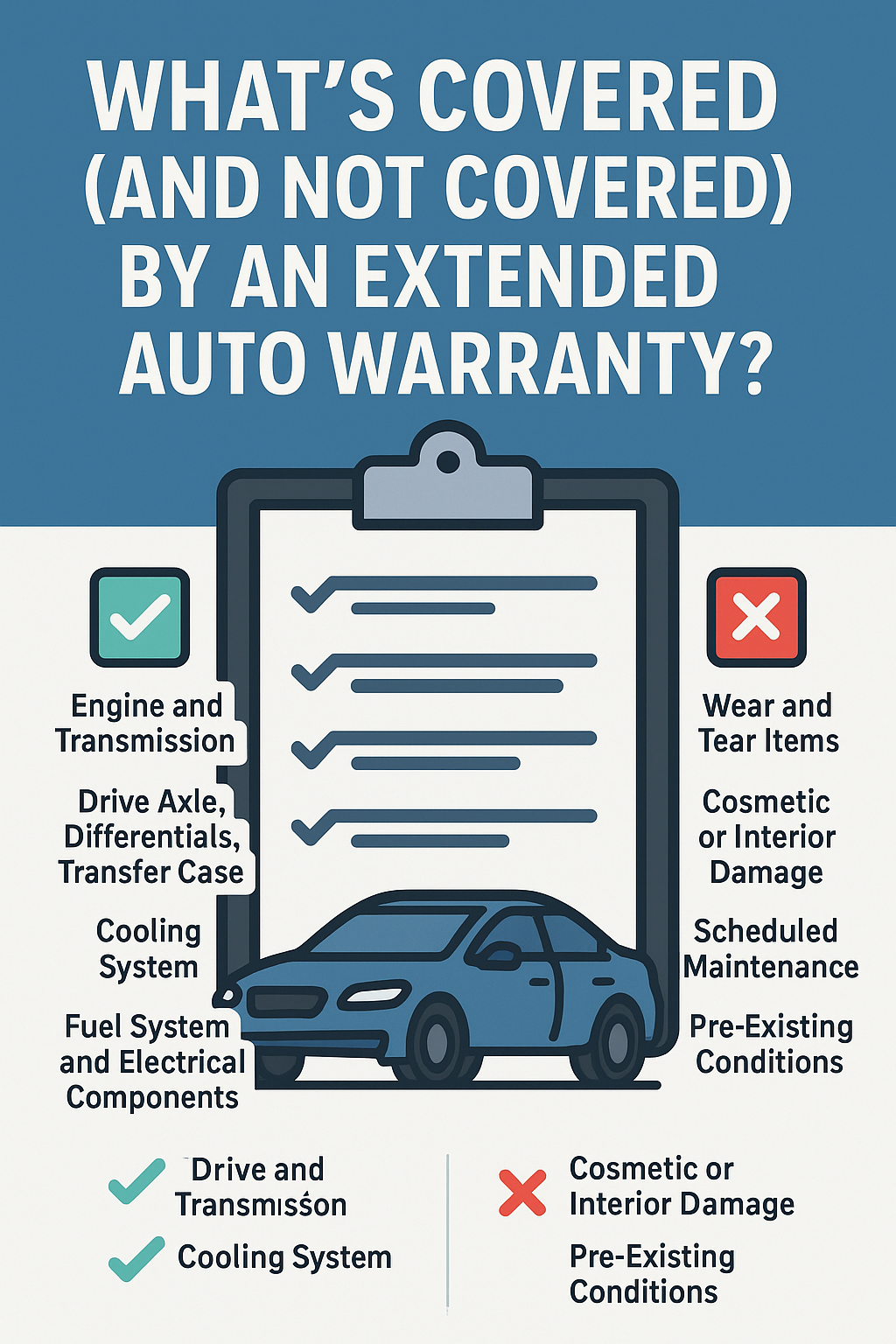When shopping for extended auto warranties, many drivers focus on price and term length—but overlook the most crucial detail: what’s actually covered. Not all warranties are created equal, and understanding the difference between comprehensive, powertrain, and component-specific coverage can save you from unexpected repair bills and buyer’s remorse.
In this article, we’ll break down the typical inclusions and exclusions of extended auto warranties, and what you should know before signing any contract.
Understanding the Basics
Extended auto warranties—also known as vehicle service contracts—kick in after your factory warranty expires. They’re designed to protect against the high cost of mechanical breakdowns. Depending on the provider and plan, coverage can range from basic drivetrain protection to near bumper-to-bumper inclusivity.
What’s Typically Covered
✔ Engine and Transmission
The heart of your vehicle—these parts are expensive to repair and commonly included in all levels of coverage.
✔ Drive Axle, Differentials, and Transfer Case
Especially important for AWD or 4WD vehicles.
✔ Cooling System
This includes the radiator, water pump, and cooling fan—components critical to preventing engine overheating.
✔ Fuel System and Electrical Components
Advanced plans may include fuel injectors, starters, alternators, power windows, and even navigation systems.
✔ Air Conditioning and Heating
Climate control systems, particularly the A/C compressor and condenser, are often covered in mid-to-premium plans.
✔ Seals and Gaskets
Typically included only if part of a covered component’s failure.
What’s Typically Not Covered
✘ Wear and Tear Items
Brakes, tires, windshield wipers, bulbs, belts, and filters fall under routine maintenance and are generally excluded.
✘ Cosmetic or Interior Damage
Scratches, upholstery wear, dashboard fading, or damage from spills won’t be covered.
✘ Scheduled Maintenance
Oil changes, tire rotations, alignments, and tune-ups are your responsibility—even under premium contracts.
✘ Pre-Existing Conditions
Most plans won’t cover issues that existed before you bought the warranty, which is why timing is critical.
✘ Environmental Damage
Rust, corrosion, hail, and flood damage are not covered under service contracts—these fall under auto insurance.
Key Takeaways
-
Always read the full contract, not just the brochure or summary.
-
Look for exclusionary coverage, which lists only what’s not covered—this is often more comprehensive.
-
Ask about the claims process, labor rates, and approved repair facilities.
-
Verify if the plan is transferable and cancelable—useful if you sell your car or change your mind.
-
Reputable providers should be backed by a strong insurance company and offer a 30-day review period.
Final Thought
An extended auto warranty can offer real peace of mind, but only when you know exactly what’s covered. By understanding the fine print and comparing your options, you can make an informed decision that protects your car—and your wallet—for years to come.
